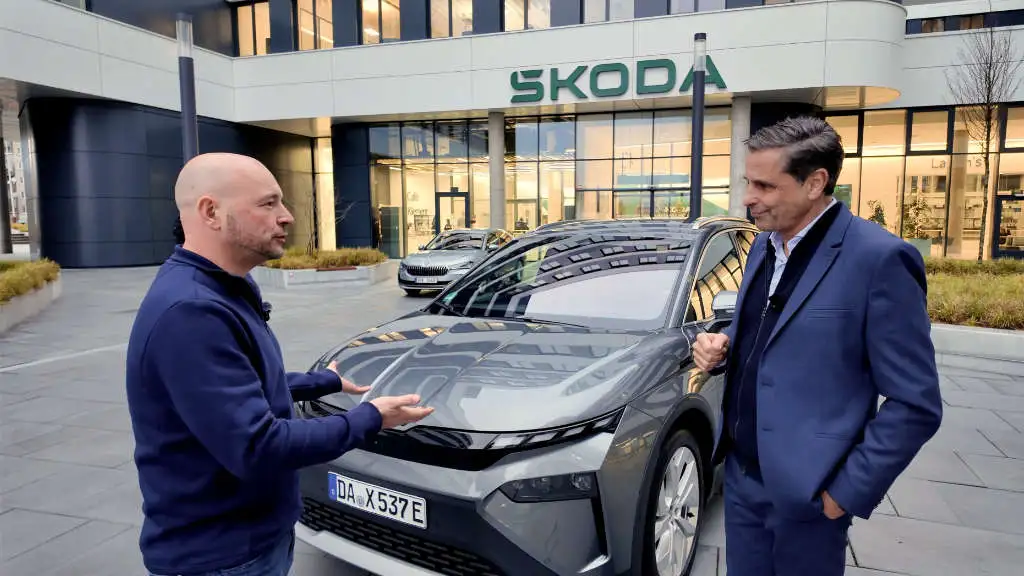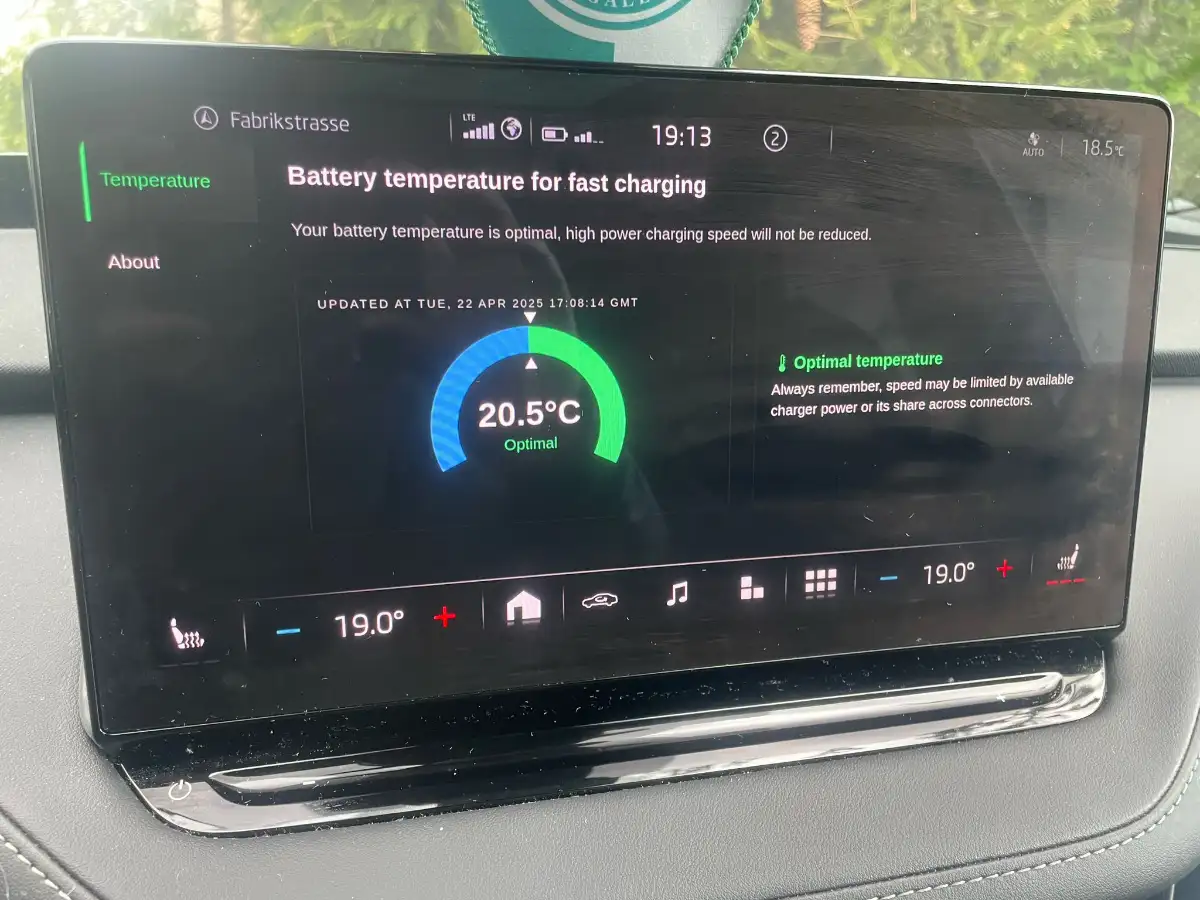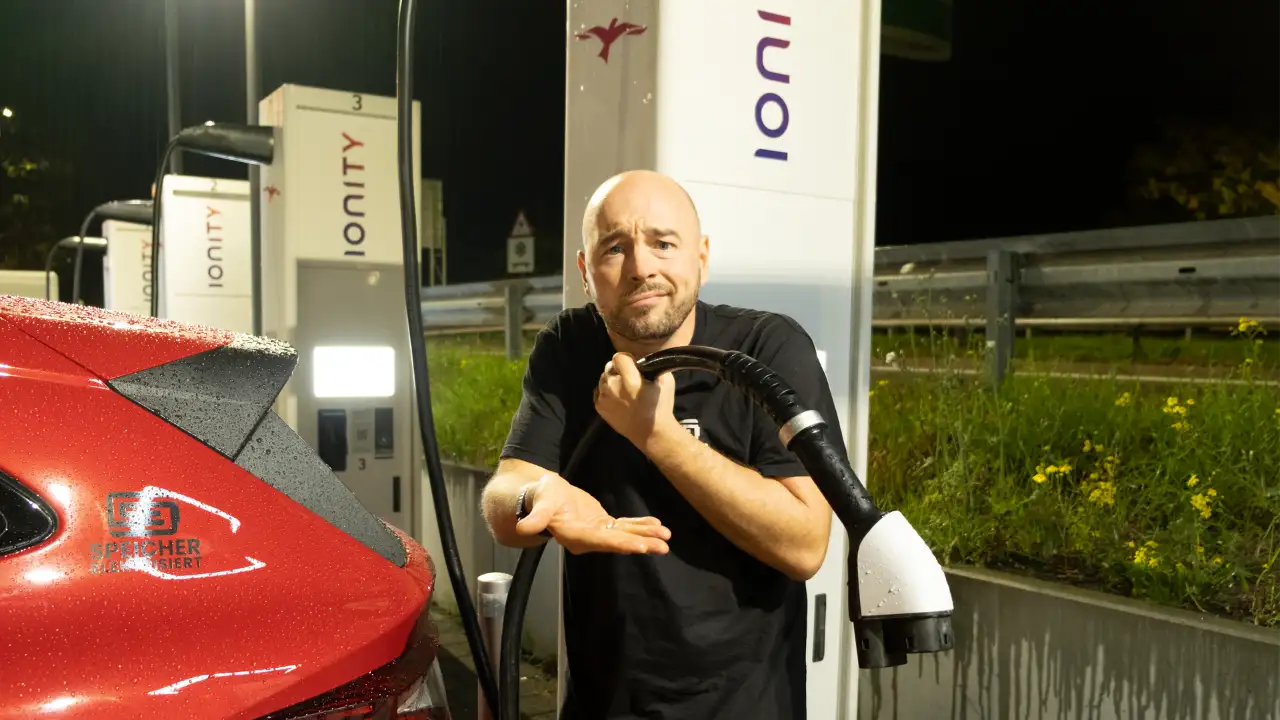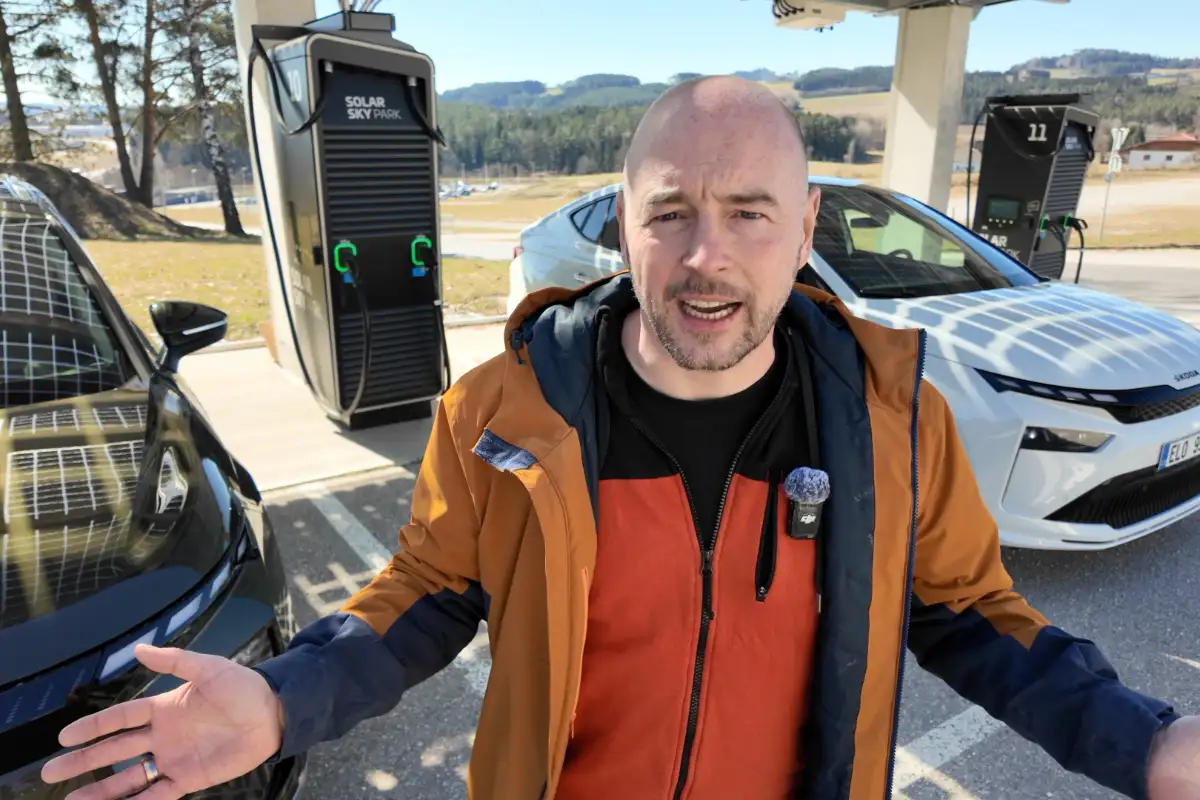I had the opportunity to speak with Klaus Zellmer, CEO of Škoda, about the future of electric mobility, current challenges, and upcoming models. The conversation offered many insights – and a few surprising answers.
“Petrol in your veins, electricity in your heart?”
I recently listened to the Move Mobility Podcast by Auto Motor und Sport. The host opened with: “You’ve got petrol in your veins.”
I can believe that – coming from Zuffenhausen and the city of the three-pointed star.
But today, is that petrol under electric tension – or has electricity made its way into your heart?
Klaus: I do have electricity in my heart! At Škoda, we offer both – from the ENYAQ and ELROQ to the diesel Kodiaq. Our job is to deliver what customers want, not what I personally prefer.
What’s missing for EVs to truly break through?
Matthias: In some countries, EVs have taken off – China is booming, Norway is there. But in Germany, Austria, Switzerland, or the Czech Republic, it’s a different story.
What’s holding things back? What’s the tipping point?
Klaus: Cost is a key factor – both in purchase and operation. Then there’s charging infrastructure, acceptance, and behavioral change.
A big one is range anxiety. Many people buy a car based on rare use cases – like that IKEA wardrobe they once transported five years ago.
Why are European EVs more expensive?
Matthias: Pricing is a big topic – especially for European manufacturers. Labour costs, energy prices, and battery costs are high.
China is vertically integrated – BYD handles everything from raw materials to finished cars. You have to purchase battery cells. What’s Škoda doing to change that?
Klaus: Batteries make up 40% of an EV’s cost. We build high-quality, cost-efficient battery systems for the Group in Mladá Boleslav.
The next step is clear: in-house battery cells. We’re building facilities in Salzgitter, Canada, and Valencia to gain more vertical integration.
That said, batteries in China go for less than €70 per kWh – we can’t match that yet. The ELROQ will cost customers about the same as a Karoq, but our profit margin is significantly lower.
Is Škoda losing its innovative edge?
Matthias: Škoda has shown strong development competence with combustion platforms like MQB.
But the MEB A0 platform (e.g., ID.2, Raval) went to SEAT. Software is with Cariad. Doesn’t that weaken Škoda’s innovation power in the EV era?
Klaus: No. We’re very efficient in production and building the right skills for the future. Platform know-how still resides in the Group, but that may shift with the SSP platform.
We’re proud that the ENYAQ was the best-selling EV in Germany – ahead of Tesla and others.
And our battery assembly in Mladá Boleslav is a real strength.
ELROQ vs. Karoq – Pricing no longer an argument?
Matthias: The ELROQ costs as much as the Karoq – a first. Can it surpass the Karoq?
Klaus: That depends on the market conditions. The Karoq sells 120,000 units per year – the ELROQ needs to get there. But help us spread the word – it’s a great car!
The price may be on par, but the margin is still much lower for the ELROQ.
When will we see an electric Škoda estate?
Matthias: Škoda is famous for estates – the Octavia wagon is a bestseller. When will the electric estate arrive?
Klaus: It’s coming – but only with the SSP platform. MEB is too tall for a good estate. We took more time to build the perfect EV estate.
And yes: MEB+ is real, not just a rumour.
Matthias: The e-Citigo was popular but not profitable. Will there be a successor?
Klaus: Yes, but not before 2027. VW is working on an entry-level model below the ID.2 – we’re waiting to see how that develops.
The biggest issue? Small electric cars are very difficult to make profitable.
Software – What can customers expect?
Matthias: Software is essential to EVs. The first generation (Software 2.x and 3.x) was difficult. Now updates to 3.7 are rolling out – but many customers ask: are there new features, or just bug fixes?
Klaus: The first-generation hardware has its limits. We’re doing everything we can, but new features are not always technically possible.
Matthias: The second generation runs Software 4.0 to 5.4 – but existing vehicles haven’t received these updates. Why?
Klaus: Retrofitting updates is far more complex than applying them in production. We’re cautious – a mistake can have serious consequences. But: we’re working on it.
Matthias: Some in the media say Cariad is done. Rivian is coming in as a new software partner. What does this mean for current customers?
Klaus: Cariad had a tough start, but has improved significantly. Rivian brings fresh momentum.
But: existing systems will be supported. We’d be crazy to abandon current customers.





